
The Astronomical Society: Equinox Lecture Series



Monday 21 September 2020 at 6:00 pm

EIT, Gloucester Street, Taradale, Lecture Theatre 1 (Broadcast on Screen)
Sting – the large Elvish dagger from The Hobbit and The Lord of the Rings – was wielded by both Bilbo and Frodo, and glowed blue whenever orcs were nearby. Nth Metal from DC Comics, is a hyper-conductive metal that has the ability to negate gravity, allowing a person to carry objects 20-70 times heavier than normal and to fly. From what we know of the periodic table and the world around us, could they exist in real life?
Join us for ‘Materials Fact or Fiction’, where MacDiarmid researchers delve into the periodic table to give us their scientific take on whether these could be reality in a not too far off future.
In order to accommodate any further changes in alert levels due to COVID, this year’s showcase will be in a digital format, with the option to either attend in person at EIT should that be possible and your preference, or to dial in from your own device. Please register here if you wish to dial in and we will send you the appropriate link to do so.
Dr Mike Price: MacDiarmid Institute Postdoctoral fellow in Physics, Victoria University of Wellington and
Dr Penny Brothers: Director of the Research School of Chemistry, Australian National
University and MacDiarmid Principal Investigator.
Joined by Otago Museum science communicator Dr Claire Concannon as MC. There’ll be two talks, a three minute animated video on the ‘science of lightsabers’, and time for Q&A.
Thursday 27 August 2020 at 6:00pm

Planetarium, Napier Boys’ High School, Chambers St, Napier
Professor Rod Downey
There are those who would argue that these two activities are some of the pinnacles of human achievement. I work in mathematics and specifically algorithmics and the theory of computation. I am a teacher and deviser of Scottish country dances. I will try to explain how the cognitive processes in my kind of mathematics and dancing resemble one another. Whilst doing so, I hope to give insight into a small part of modern mathematics which I know something about and an interesting and fun dance form. I will illustrate with some videos and diagrams.
When interviewed by Radio New Zealand, I know that people found the combinations of mathematics, Scottish Dancing and surfing a strange mix, but at least the first two are completely natural.
The talk is meant for a general audience, and you won’t be forced to bring your dance shoes.
Professor Rod Downey came to New Zealand in 1986. He has worked at Victoria University of Wellington ever since. He works in several areas: mathematical logic, computability theory (the theory of computation), algebra, combinatorics and analysis. In the early 1990’s with Mike Fellows he co-invented Parameterized Complexity, which is a major branch of theoretical computer science; an area which uses “parameters” to understand running times or algorithms. As his Wikipedia page shows, he has won numerous awards, including two Shoenfield Prizes, and culminating in a Humboldt Prize and the 2018 RSNZ Rutherford Medal. He is currently developing a theoretical framework for Online Algorithms, which are the kinds of algorithms we deal with when we can’t see all the input. For example, each time you click on some website, in the background there is an online algorithm trying to target you to buy things.
Wednesday 5 August 2020 at 6:00pm

EIT Taradale, Lecture Theatre 1
Dr. Mazin Bahho, Senior Lecturer, EIT
This presentation is about a research project that discusses the process of retrofitting an existing structure to become an exhibit as a sustainable building and a facility that inspires responsible environmental behaviour in the community. It involves a disused log cabin at the Eastern Institute of Technology (EIT), Napier, which was previously used as a staff office space for the Arts Programme and an artist-in-residence living space. The building is also located on a site that has strong historic, cultural, and spiritual associations with local Māori. Today, the previously abandoned cabin is an eco-friendly, sustainable building with insulation, double-glazed windows, solar panels, water storage and a wastewater treatment system.
Mazin’s research discusses how to create a brief for this specific building, given the wide, and sometimes conflicting, body of knowledge about how a sustainable building should be. During this process, he used qualitative and interpretive research strategies. Then the project was offered to a group of Second Year Design students at EIT as part of the Design Studio course. This involved setting design criteria for an exemplary sustainable building. The presentation also discusses how the eventually selected sustainability criteria were adopted.
Dr. Mazin Bahho completed his M Sc Degree in Architecture from the University of Baghdad in 1987, also with distinction, specialising in Modular Design. Before immigrating to New Zealand in 1995, he worked as an architect in Iraq, Jordan, and the UK in fields of architectural design practice, observation, planning, site residency, shop-drawings, documentation, and supervision of a wide range of projects: residential, commercial, cultural, and educational. He established his own architectural practice in Baghdad from 1991 – 1994. Mazin was involved in a number of architectural competitions and achieved success and honourable awards.
Mazin moved onto complete his Ph.D. with the Victoria University of Wellington. Mazin was the Programme Coordinator for EIT’s Visual Arts and Design Programme from 2009 – 2011. He is passionate about investigating the qualities of living spaces to visualise and construct design solutions and the issues of human habitation with a focus on ecology and culture. His investigations aim is to provide a workable model that can potentially influence attitudes to spatial design within the community.
Tuesday 7 July 2020 at 6:00 PM

EIT Taradale, Lecture Theatre 1
Dr. Nicolette Niemann
In January 2020 a group of representatives from the New Zealand horticultural industries, government, research and education went on an Executive International Horticultural Program (Exec IHIP) tour through The Netherlands and Belgium, ending at the Fruit Logistica trade fair in Berlin. The aim was to learn about the horticultural priorities on which Europe is focusing, and how different regions adapt to those requirements. Europe is focusing on the environment, cooperation and what the consumer wants. We quickly realised that New Zealand is a small player on the world stage, but that our produce is highly regarded and that we have to work hard to remain at the forefront of quality and innovation which gives us a leading edge in many markets. We discovered trends and policies that will change the way that we will grow and sell produce, and interact with the rest of the world. Many lively discussions took place during our travels, and Brexit along with COVID-19 were big features during the trip. The Exec IHIP tour is planned to become an annual event, to generate a pool of strategic thinkers in New Zealand to help us make the best decisions for our future in horticulture.
Dr Nicolette Niemann is a postharvest physiology scientist at The New Zealand Institute for Plant and Food Research Limited. Her research focuses on understanding and manipulating the chemical reactions that take place in produce after it has been harvested. Her passion is to minimise the losses of produce from farm to fork, with a speciality in the storage of fresh fruits. She has regular interactions with growers, packhouses and exporters in the Hawke’s Bay area and does research for service providers in the horticultural industry. Although a large part of her work focuses on apples, she has experience working on kiwifruit, summerfruit, tomatoes, onions and cut flowers.

Courtesy of the Royal Society Te Apārangi, here are some videos of past lectures. Simply click on any of the images below to watch the lecture
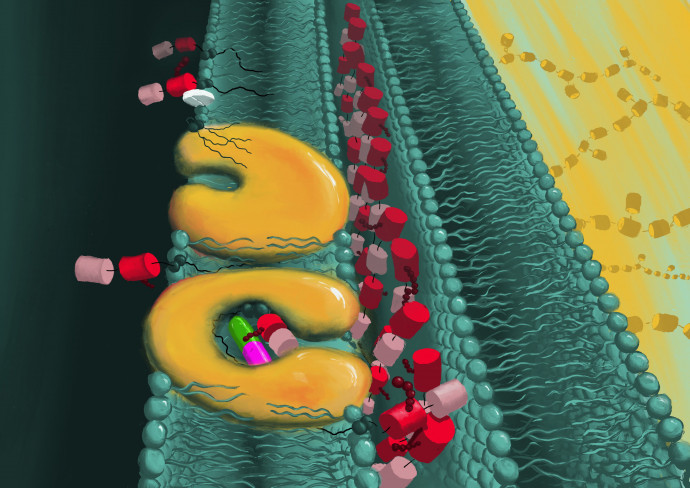
‘What’s really inside your medicine cabinet?’ was a public lecture presented by Professor Dame Carol Robinson in Christchurch on Friday 16 March 2018
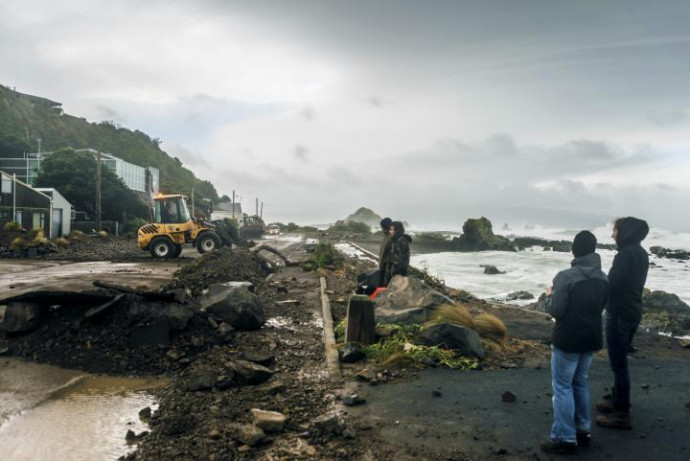
‘Climate change: stormy weather ahead’, a public lecture presented by Prof. Jim Skea in Wellington on 21 March 2018

‘Human longevity: myths and possibilities!’ is a talk presented by British gerontologist Professor Sarah Harper, founder of the Oxford Institute of Population Ageing, with introductions from Professor John Windsor FRSNZ.

Is New Zealand becoming a world leader in the bioengineering industry?
Professor Merryn Tawhai, Director of MedTech CoRE, examines our capabilities in this field, and also shows the progress of her own research, modelling the human lung with its implications for healthcare.
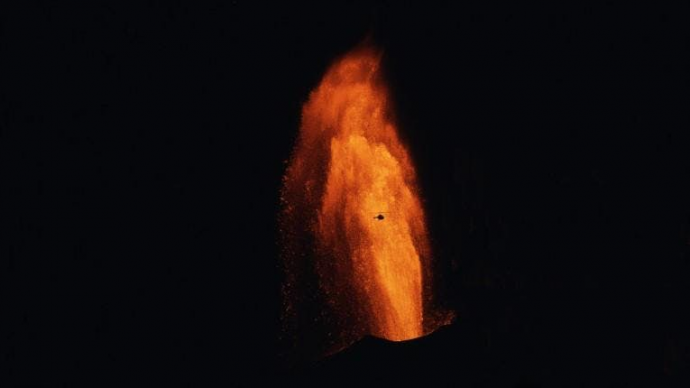
The 2018 Rutherford Lecture ‘super tour’ was presented by the 2017 Rutherford Medal winner Professor Colin Wilson FRS FRSNZ who delivered his lecture at 22 locations across New Zealand.
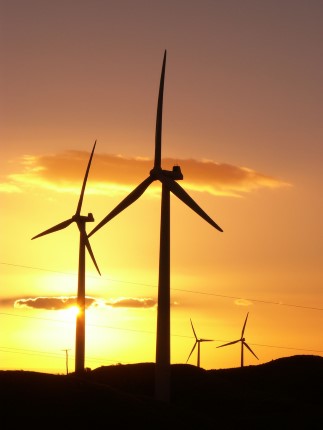
‘Energy: what’s possible, what’s not’ with Professor Daniel Nocera (USA).
Patterson Rockwood Professor of Energy at Harvard University, Professor Daniel Nocera presented this lecture at Royal Society Te Apārangi on 20 February 2018, thanks to The MacDiarmid Institute.
A pioneer in energy conversion, particularly on the generation of solar fuels, Daniel talks about developing his inventions, the Artificial Leaf, which harnesses solar power to split water molecules into hydrogen fuel, and subsequently, the Bionic Leaf, in the hope that these inventions can become affordable energy sources to those in poverty.
Here are some of the lectures hosted by Hawke’s Bay Branch that have been videoed (with thanks to Wayne Dobson of EIT), and also videos of events hosted by other branches of the Royal Society.

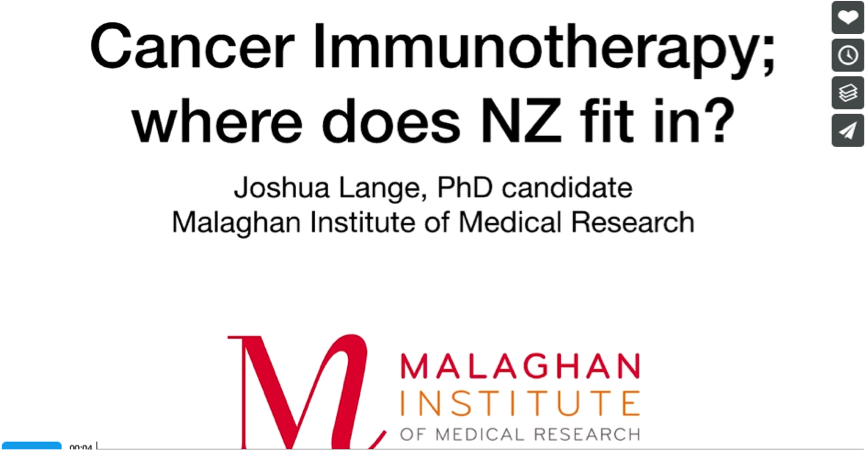
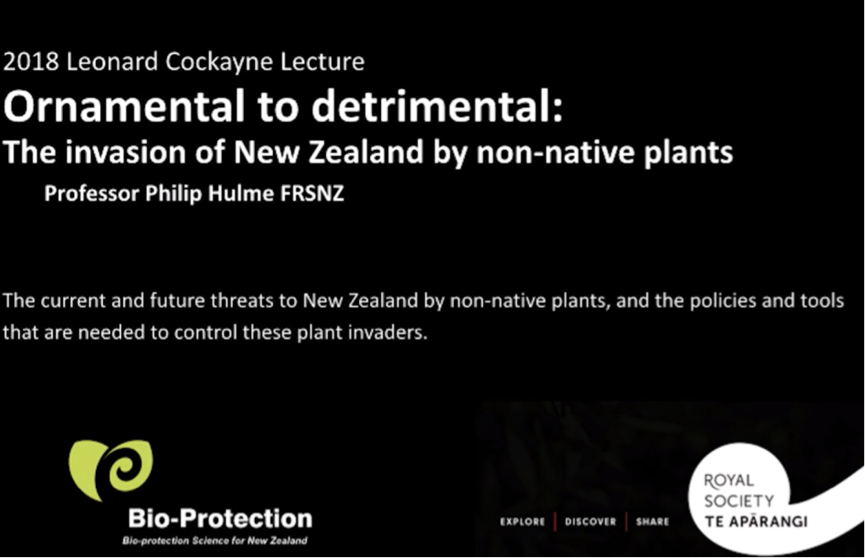
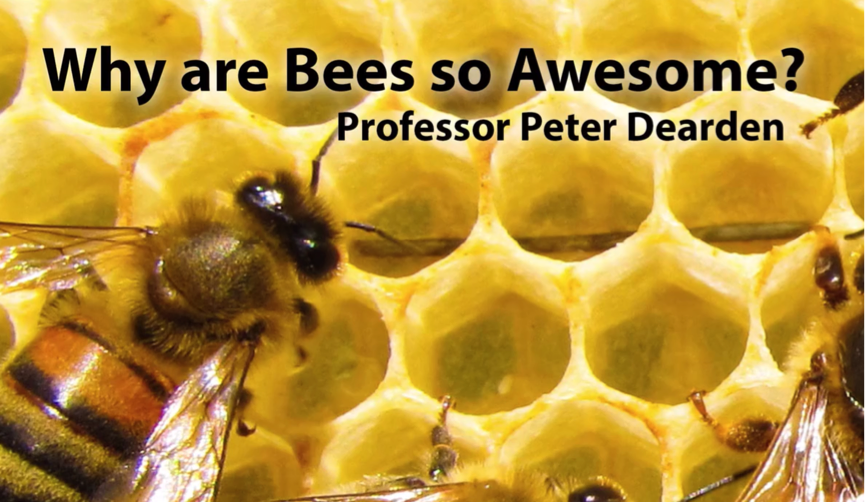

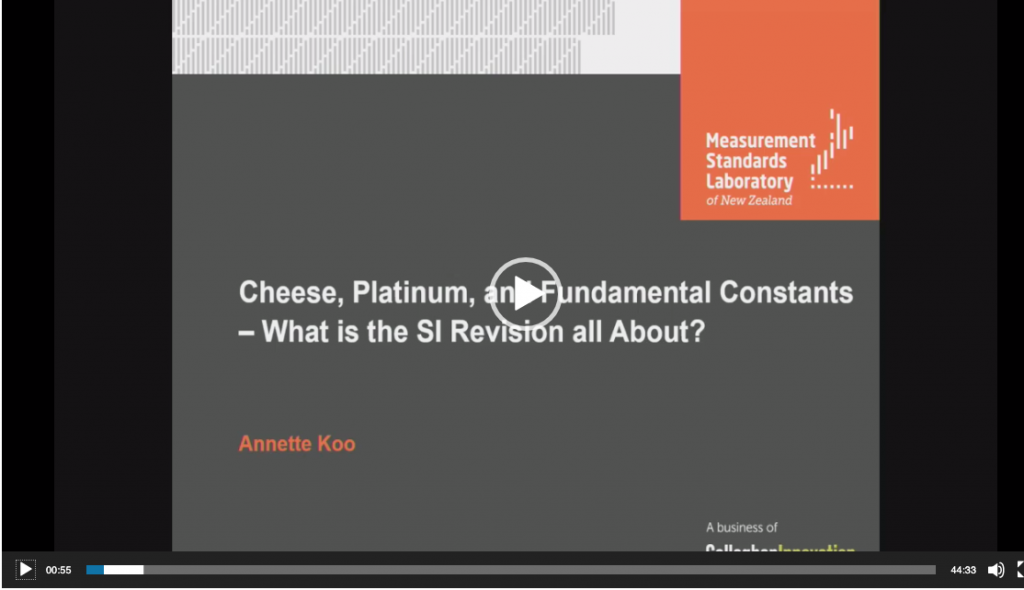

Evolution of fish harvesting technology has focussed on minimising cost and optimising extraction selectivity, i.e. minimising unwanted catch. Because of the sustainable limits of the fishery, our fishing industry is now at the point where increased value can only come from maximising fish utilisation. To achieve this we must be increasingly sophisticated about how we manage and harvest our limited resources. Fishing technology has evolved to the point where we are able to control many aspects of the harvesting process; but where to apply the control to maximise fish value?
From our research in the 1990s on King salmon (a model species for understanding the effects of harvesting on post-harvest quality), we developed a new fish-centric, quality-focussed, rested harvesting process. We applied the same approach to NZ’s largest wild fishery (hoki).
Development of a Modular Harvesting System (MHS, which replaces the conventional gear of a trawl), focussed on delivering low-damage, low-fatigue capture of wild fish and the unharmed escape and release of unwanted catch. Commercialisation of this technology has been at the centre of the Primary Growth Partnership-funded Precision Seafood Harvesting (PSH) programme.
This presentation will look at the background, underlying principles and development of the technology, and how fish-focussed industrial fishing technology is not only feasible, but great business.
Dr. Suzy Black is a Senior Scientist/Team Leader for PFR’s Seafood Production Group in Nelson. She has a PhD in Fish Physiology from the University of Canterbury, and over 20 years’ experience in development and industrial implementation of finfish capture, handling and postharvest storage technologies.

Have you ever wondered about that sleeping giant that lies beneath Hawke’s Bay, known as the Hikurangi subduction zone? Dr Laura Wallace will discuss the results of scientific studies that reveal what the subduction zone is currently up to, include the latest on the “slow-motion earthquakes” that occur regularly in the Hawke’s Bay and Gisborne regions, and what we have learned about them by placing monitoring instruments on the seafloor. Laura will also assess the earthquake and tsunami potential of the Hikurangi subduction zone, and describe a number of recent international and New Zealand-led missions aimed at better understanding our sleeping giant.
Dr Laura Wallace is a geophysicist at GNS Science in Lower Hutt, with a joint position at the University of Texas. Much of her scientific career has focused on investigating New Zealand’s largest fault, the Hikurangi subduction zone. She is currently leading a multi-national effort to better understand the hazards it poses.

Professor Kay Morris Matthews, Research Professor, EIT
Tuesday 3 December, 6pm
Room R101, School of Viticulture and Wine Science, EIT,
501 Gloucester Street, Taradale
Cost: $10 a head for drinks and nibbles; pay at the door (cash please). To secure your place, please email: secretary@hawkesbay.rsnzbranch.org.nz
From 1874, large numbers of Pākehā settlers travelled to the Athenaeum in Napier to attend monthly lectures of the Hawke’s Bay Philosophical Institute (HBPI). They came to listen, learn, take part in discussions and meet up with others interested in a range of subjects. In the main, those presenting their ideas and research were local.
Through and alongside the HBPI meetings emerged an inter-generational network of researchers, friends and supporters, both women and men. Drawing upon a range of primary and secondary sources collected during thirty years of research, the focus here is the behind-the scenes mentoring and the relationships between an inter-connected group who sought out and then shared new forms of knowledge. This celebratory tribute for the end of year features William Colenso, Henry Hill, William Spencer, Bessie Spencer, James Large, Amy Large, Frank Hutchinson, Herbert Guthrie-Smith, Georgina Guthrie-Smith and Barbara Guthrie-Smith.
Professor Kay Morris Matthews was raised in Hawke’s Bay, and has held academic positions at the University of Waikato, the University of Auckland and at Victoria University of Wellington. Kay is now Research Professor, Education, Humanities and Health Science, at EIT.Kay’s published research on William Colenso and Henry Hill has provided insights into their educational and research realms. Her current research, the biography of Anna Elizabeth Jerome Spencer, has led to a greater appreciation of the contributions of others involved in the HBPI, which from 1947, became the Royal Society of New Zealand Hawke’s Bay Branch.